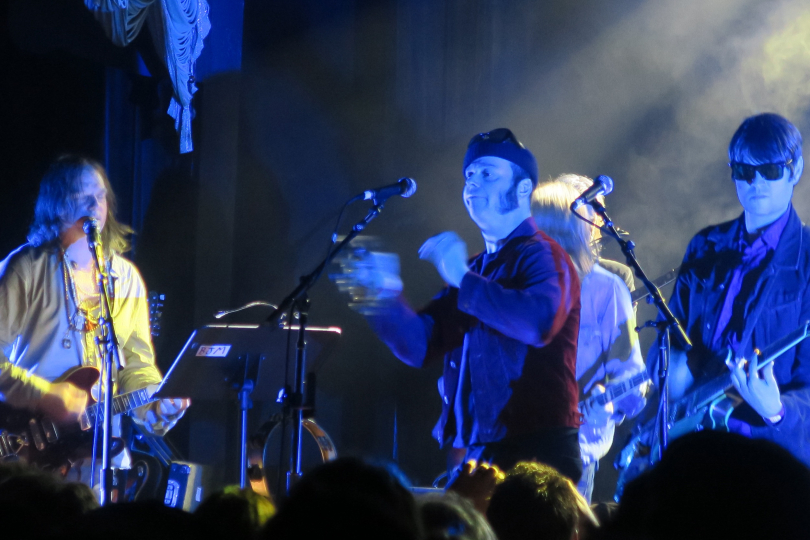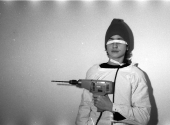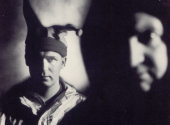
Milestones in Music History #10: The Brian Jonestown Massacre: My Side of Their Story
Noise Music; Barret; Suicide; Velvet Underground; Desert Rock; the history of music is a perilous and yet appeasing path to walk. It has been, since the very beginning of times, this powerful gift, and music is possibly the most evolving and sophisticated form of art, which affected culture, lifestyle, society, and history itself. The purpose of the Insounder series “Milestones in Music History” is to delight you with some of the pivotal moments in music, some acts, facts, and records that delineated and shaped music for years to come (actually as far as this series could go on). I have selected a few, based on my personal path through music culture, and based on the fact that I firmly believe these moments radically changed everything. At the beginning of the '90s, the evolution of music suffered a major turn, as new genres appeared, substituting or merging with the previous music forms. We experienced psychedelia in the '60s, folk and blues in the '70s and garage rock in the '80s. In 1990 though, a band was born which would represent a totally new and exciting music path, but at the same time could condense the spirit of the '60s, '70s and '80s. A band whose name already said everything, in case they had nothing to say (or to sing). Today’s episode will go through the vicissitudes of a band that never minced its tongue, and that contributed to the development of the music we listen to today: The Brian Jonestown Massacre.
Asking you if you know Brian Jones would be silly—who doesn’t know Brian f**king Jones! However, probably fewer people are familiar with Jim Jones, political activist, preacher and faith healer. In 1955 Jim Jones became the religious leader of The Peoples Temple of the Disciples of Christ, known today simply as the Peoples Temple. A cult funded by Jones, Peoples Temple established a rural settlement in Guyana in 1974, and started The Peoples Temple Agricultural Project, or simply “Jonestown.” Nothing wrong with that so far, if it wasn’t for the fact that on the 18th of November 1978, 909 people were found dead (the official number became eventually 918). A mass killing, caused by cyanide poisoning—a massacre where people killed themselves or were killed by some other member of the cult.
From the mixture of these two elements—Brian Jones and the Jonestown Massacre—Anton Newcombe set the name for his new band. While the band was formed between 1990 and 1993 in San Francisco, the very first demo tape, titled Pol Pot's Pleasure Penthouse from 1993, eventually became a quite popular bootleg. In that same year, they also released Spacegirl and Other Favorites, compiled as Newcombe claimed, from his "studio trash."
Their actual debut studio album arrived in 1995. Methodrone was a bright example of the sound of the band at the time: you could hear a lot of ethereal sounds and soft psychedelia. Their music genre at the beginning could be defined as shoegaze (or shoegazing, which is often conflated with "dream pop")—a subgenre of indie and alternative rock, and characterized by fuzz distortion, distorted vocals, ethereal atmospheres and loud volumes. We can find examples of the genre in other groups of that same period, like Dinosaur Jr., The Jesus & Mary Chain, Cocteau Twins, Galaxie 500, Spacemen 3 and My Bloody Valentine.
But slowly the band evolved, drifting apart from the shoegaze and the neo-psychedelia. The band itself went through several changes in its line-up (Anton is the sole consistent member up until today). From the dream pop and the neo-psychedelia which characterised their first years, The Brian Jonestown Massacre started to create music closer to the sounds of the '60s, and much closer to the rhythm and blues and experimentation that The Rolling Stones produced in their early records (actually in the period Brian Jones was still alive and well, playing actively in the band).
In 1996, in a really unfashionable way (especially in terms of marketing), they released three full-length studio albums: Take It from the Man!, Their Satanic Majesties' Second Request and Thank God for Mental Illness. This immediately showed the prolificity of the band, which time will prove to be never-ending. Take It from the Man! sounded more like rhythm & blues, Their Satanic Majesties' Second Request was different—clearly inspired by The Rolling Stones’ album with almost the same title (Their Satanic Majesties Request) as if it were a sequel of the Stones’ record. It was drowned with '60s psychedelia, boosted by Indian drones, sitars, congas, Mellotrons and glockenspiels. Thank God for Mental Illness, the last release for the band in that year, was more intimate and folky—Anton sang and played acoustically throughout the album since no drummer was in the band in that period. Of all three, my favourite is Their Satanic Majesties' Second Request, as in my opinion it is the best conceived in terms of songwriting and band involvement, as can also be seen in the (in)famous 2004 documentary about the band, Dig!
After the band signed with TVT they released two albums a couple of years later, Give It Back! and Strung Out in Heaven, that still preserve the same spirit as the previous records. In 1999 another album was released, which collected tracks recorded during the sessions of Give It Back! and Strung Out in Heaven. Bring It All Back Home – Again was a discreet success, and it confirmed the sound of The Brian Jonestown Massacre. However, it was with the 2001 record, Bravery Repetition and Noise, that the band consolidated the sound of their early years. Jim Jarmusch is featured on the front cover of the album and on it a re-work of a song written by The Cryan’ Shames, "Saylor."
It was with the following album in 2003, And This Is Our Music (a reference to the almost identically titled albums This Is Our Music by Galaxie 500 and Ornette Coleman), that Newcombe steered his band more towards electronic music. With this same wave came the EP in 2005 We Are the Radio, published by Newcombe’s own label, The Committee to Keep Music Evil, and it was the last album to be published in the US.
After moving to Berlin, Anton concentrated more on experimentation, and in this environment My Bloody Underground was born in 2008. The record seemed inspired by bands like My Bloody Valentine or The Velvet Underground. In my opinion, this European period is the most interesting one, as the maturity of the band is shown in the development of their own genre. You can still hear the shoegaze and the psychedelia but it's mixed with electronic sounds and deep experimentation. After two years, The Brian Jonestown Massacre released Who Killed Sgt. Pepper?, which saw the participation of other artists (Unnur Andrea Einarsdottir, who was already featured in My Bloody Underground; Felix Bondareff, from the Russian band Amazing Electronic Talking Cave; and the musician Will Carruthers). Again, two years later in 2012, they released the album Aufheben. The title was inspired by the Hegelian use of the term, meaning the destruction of something with the purpose of preserving it (which somehow could be a metaphor of the band’s philosophy). In 2014 the amazing record Revelation came out, and as the title predicted, this record was indeed a revelation, a beautiful journey through the musical evolution of the band. Songs like "Vad Hände Med Dem?", "Days, Weeks and Moths", "Food For Clouds" and "Memory Camp"—they are a bright signature of the sound of the band. I believe that if you were to approach The Brian Jonestown Massacre for the first time, this is where you should start.
The year after, Musique de Film Imaginé came out, and it was a completely different concept. It was in fact a soundtrack conceived for an imaginary film and was inspired by the films of French directors, like François Truffaut and Jean-Luc Godard. The band published an album almost every year: Third World Pyramid (2016); Don't get Lost (2017); Something Else (2018); The Brian Jonestown Massacre (self-titled, 2019). In these last three years, Anton continuously released new unreleased material, mostly online, and he kept giving updates about the group's future projects. This month, the band announced that they will release two new albums this year, Fire Doesn't Grow On Trees and The Future Is Your Past.
The Brian Jonestown Massacre are one of the most intriguing and captivating bands of our time. Newcombe's immense prolificacy, his experimental approach, literary and cinematic references, development from shoegaze to avant-garde music—all of this has made The Brian Jonestown Massacre more than worthy of mention as a milestone in music. Their journey is not over yet, and this makes the discovery of their art even more exciting.
How impacting do you think shoegaze has been for contemporary music? Is prolificacy proof of an artist’s genius and creativity? Or is it possible to define a band with only one record? Do you think that it is necessary to destroy something, in order to preserve it, the way Anton did with his The Brian Jonestown Masssacre? Leave us your opinion below in the comments!
If you have found an error or typo in the article, please let us know by e-mail info@insounder.org.





